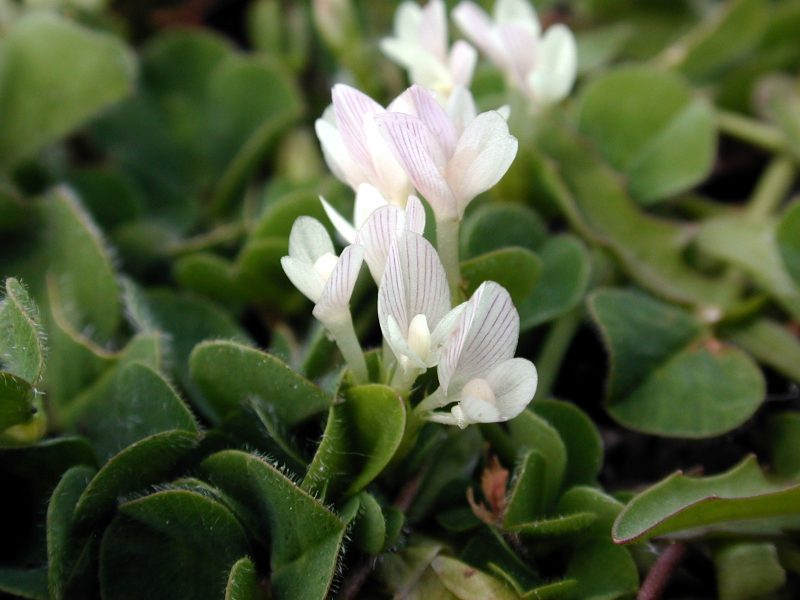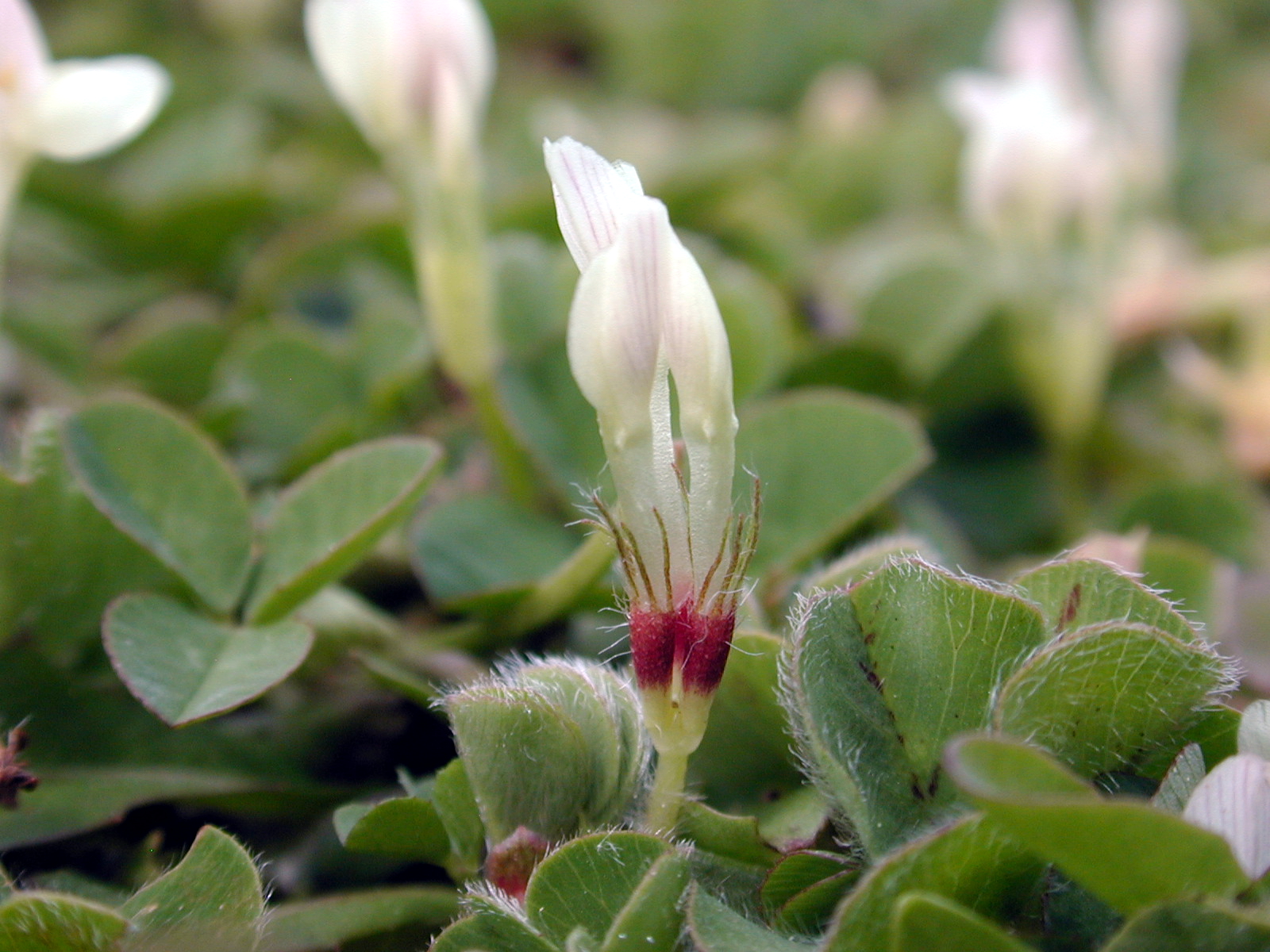People | Downloads | Blog posts
This project, initiated in 2015 and funded by the Sustainable Farming Fund (SFF Project 408090), was created to identify, describe and promote methods to increase the subterranean clover content on summer dry farms throughout NZ. A complete list of blog posts and documents is provided at the bottom of the page.
A decade of research by the Lincoln University Dryland Pastures Research Team has identified subterranean clover as second only to Lucerne as the most suitable legume for dryland pastoral farmers. Our aim with this project is to develop a comprehensive best management strategy (similar to that developed previously for Lucerne) to maximize the use of sub clover for dryland New Zealand farms.
Summer dry hill country pastures (>2M ha) are always extremely nitrogen deficient. This means they, like all N deficient grass, use their scarce spring water inefficiently (5 kg DM/mm water used) to produce low yields (1-3 t DM/ha/yr). As a consequence of this severe N deficiency, dryland pastures typically show high responses to fertilizer N (20 kg DM/ha/kg N applied) which is obvious in urine areas throughout the region in spring.
The difference in growth in urine and non-urine patches is an obvious visual indicator of the lost growth opportunity that exits on all dryland farms. The physics of evapotranspiration means that both plus and minus urine patches are using their limited water resource at the same rate. A problem is that increasingly farmers recognise this and use urea fertiliser to overcome this N deficit. The opportunity exists to produce similar pasture responses to N by the introduction of suitable legumes (that are never N deficient).
Sub clover is our earliest spring growing legume, fixes N at the same rate as white clover (~30 kg N/t DM grown) and can increase dry matter yield and quality during lactation while reducing the need for urea.
Successful use of sub clover in Marlborough has been shown to increase lamb live-weight by over 7 kg/hd (27-34 kg live-weight) during lactation. Assuming 2M ha of N deficient dryland hill country the current lost opportunity is conservatively 5 kg/hd x 14 lambs/ha x 2M ha = 140M kg or 140,000 t of additional lamb meat each spring. Arguably the potential animal live-weight gain from appropriate use of sub clover is greater than exists for lucerne, plantain and chicory combined.

Researchers
- Derrick Moot, Head of Dryland Pastures Research
- Dick (Richard) Lucas, Senior Lecturer
- Sonya Olykan, Research Officer
- Breanna Taylor
Students
- Carmen Teixeira (PhD)
- Teresa Lewis (M.Ag.Sci.)
- Hollena Nori (PhD)
As a first step to exploring the potential for sub clover to increase the profitability and sustainability of dryland pastoral farmer’s members of the DPR Group have reviewed the relevant literature. The review can be viewed or downloaded in the list of relevant publications below.
Downloads
Blog posts
- 14/05/2015. Autumn annual clover regeneration at Ashley Dene
- 18/05/2015. Late autumn annual clover pasture status – the cocksfoot/sub/balansa mix
- 25/05/2015. Late autumn annual clover pasture status – the hybrid ryegrass/sub/balansa mix
- 02/06/2015. Late autumn annual clover pasture status – the cocksfoot/sub clover mix
- 11/06/2015. Late autumn annual clover pasture status – the hybrid ryegrass/sub clover mix
- 17/08/2015. Winter weed control in lucerne and grazing management of the annual clover pastures at Ashley Dene
- 21/08/2015. Mid-winter grazing of the cocksfoot dominant annual clover pastures
- 28/08/2015. Grazing begins in the ryegrass/annual clover mixes at Ashley Dene – 20 August
- 02/09/2015. State of the cocksfoot pastures with annual clovers in early spring
- 25/11/2015. Renewing Dryland Pastures
- 04/02/2016. Recovery of the cocksfoot/sub/balansa pasture following January rains
- 05/08/2016. Effects of herbicides on subterranean clover
- 25/11/2016. What’s up with Subs 4 Spring?
- 27/01/2017. Sub clover dies late spring: to bury or not to bury? That’s the question!
- 01/03/2017. Planning for sub clover dominant spring pastures in autumn
- 15/03/2017. Sub clover germinating in Marlborough this season
- 20/06/2017. Cool sub clovers and the low winter temperatures
- 31/08/2017. Sub4Spring: finally, it’s spring!
- 18/09/2017. Managing sub clover in spring
- 08/03/2018. Sub clover cultivars – get in the mix
- 25/10/2018. Keep Sowing Legumes
- 31/03/2020. Sub clover emerges in Taihape

